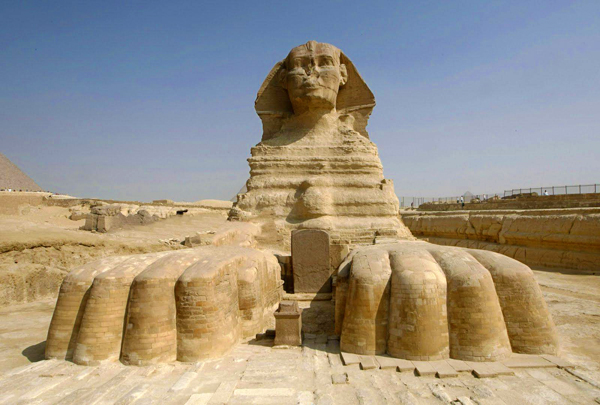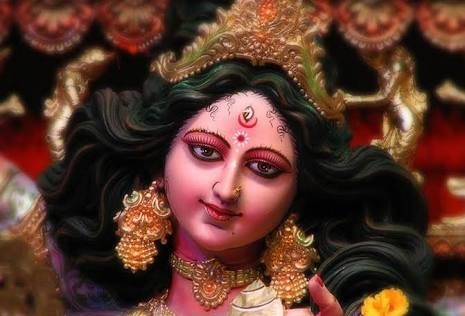From Athens to Kanyakumari: The Sphinx

The sphinx, a dangerous monster with a lion’s body and human head takes on different forms, names and meanings as it travels from culture to culture. Existing primarily in literature, myth and sculpture, this paradoxical creature is beautiful but deadly, a guardian of knowledge and threat to evil and altogether highly confusing. However, the saga of the sphinx represents the human desire of reaching for that which is beyond our domain, in body, mind and spirit.
The most well known artistic depiction of the sphinx is the Great Sphinx in Giza, Egypt, dating from the reign of King Khafre (fourth king of fourth dynasty). A portrait of the king, it soon became a popular medium of creating royal portraits in Egyptian art. Possibly derived by Greek grammarians from the verb sphingen (‘to bind’ or ‘to squeeze’), the origins of this word are dubious, much like the entity that it denotes. The earliest known myth of the sphinx is the singing, riddling, winged sphinx of Boeotian Thebes which terrorized the citizens of Thebes until Oedipus answered its riddle. From this tale, the sphinx came to be regarded as omniscient and its wisdom became proverbial.
The Arabs referred to the Great Sphinx of Giza as the ‘Great Terror’, a fact that causes us to view the sphinx with intermingled fear and perplexity till date. Notable innovations of the sphinx figure include the addition of wings to its leonine body and the creation of the female sphinx around 15th cen. BCE. It came to be depicted in pairs, often with a griffin (part eagle and part lion) or a lion. Although the context of the sphinx is hard to determine, its frequent presence in temple architecture suggests a protective function, another contradiction in the terrifying creature said to possess a voracious sexual appetite.
Apart from the Greek and Egyptian sphinx, many similar mythological creatures have been found a closer home in Asia. The Asian sphinx continues to live on in Oriental motifs especially in India, Thailand, Myanmar and Sri Lanka. In India, the sphinxes found in Mathura, Kausambi and Sanchi (3rd cen. BCE- 1st cen. CE) have many indigenous characteristics that cannot be found in Hellenist art.
In South India, the sphinx is called the purushamriga (Sanskrit) or purushamirukam (Tamil, meaning human-beast). It helps to ‘ward off evil’ and is said to take away the sins of the devotees. Hence, it is strategically located on the gopuram (temple gateway) or near the inner sanctum sanctorum. In Kanyakumari, the Shiva Ottam (Run for Shiva) is celebrated to commemorate the race between the sphinx and Bhima, the legendary warrior of the Mahabharata.
The Narsimha in Sri Lanka, is not to be confused with the Narsimha avatar of Lord Vishnu, the Hindu God of Creation as the latter has the body of a man and head of a lion, while the opposite is true for the former. Buddhists respect the sphinx as the guardian of the northern direction and usually represent it on banners.
Known as the Manusiha in Myanmar, it was said to have been created by the Buddhist monks to protect a newborn royal baby from being devoured by ogresses and is located at the corners of the stupas. Thailand too has a revered tradition of the sphinx known as Nora Nair, present in male-female pairs.
Thus, it can be said that this deadly but protective being firmly binds (sphingen) cultures all across the globe, something the world powers of today need to respect and emulate. Holding generation after generation in its wise, vice-like grip, the sphinx is a bundle of contradictions tied together by the invisible threads of the quest for knowledge and desire to excel.






